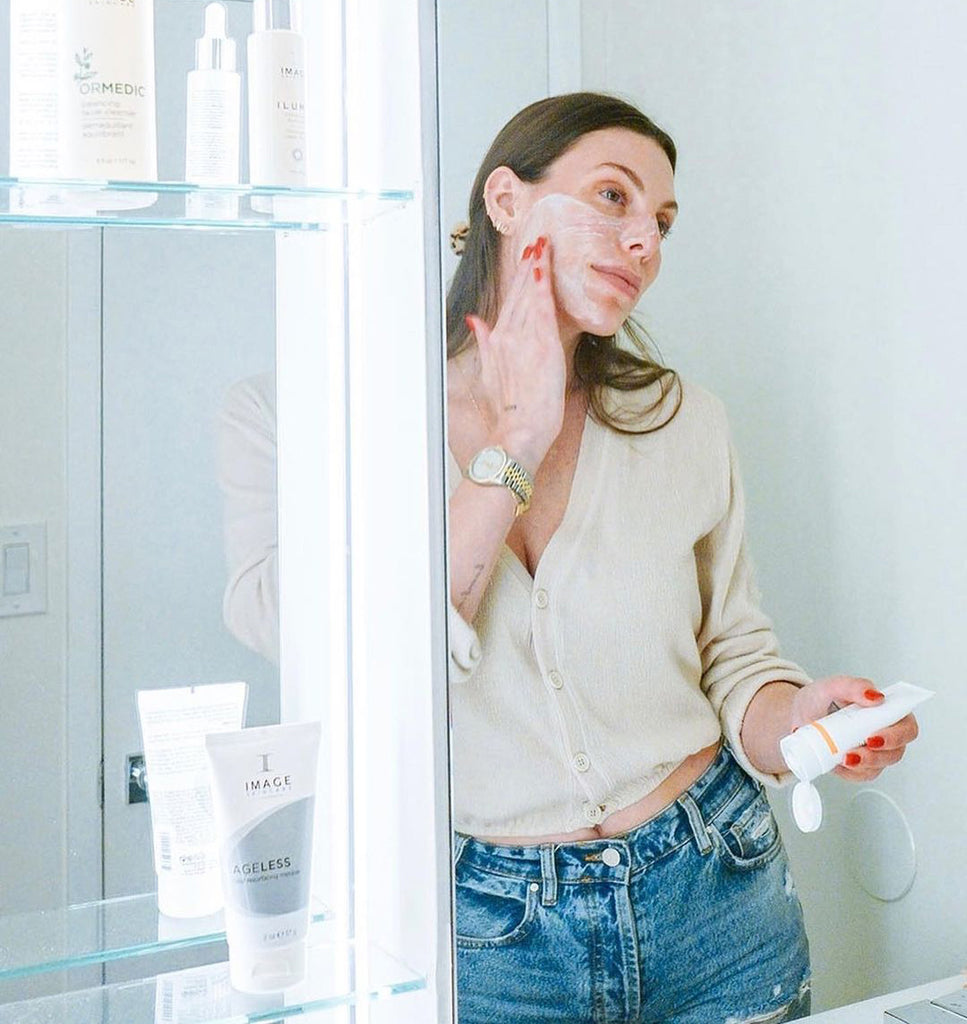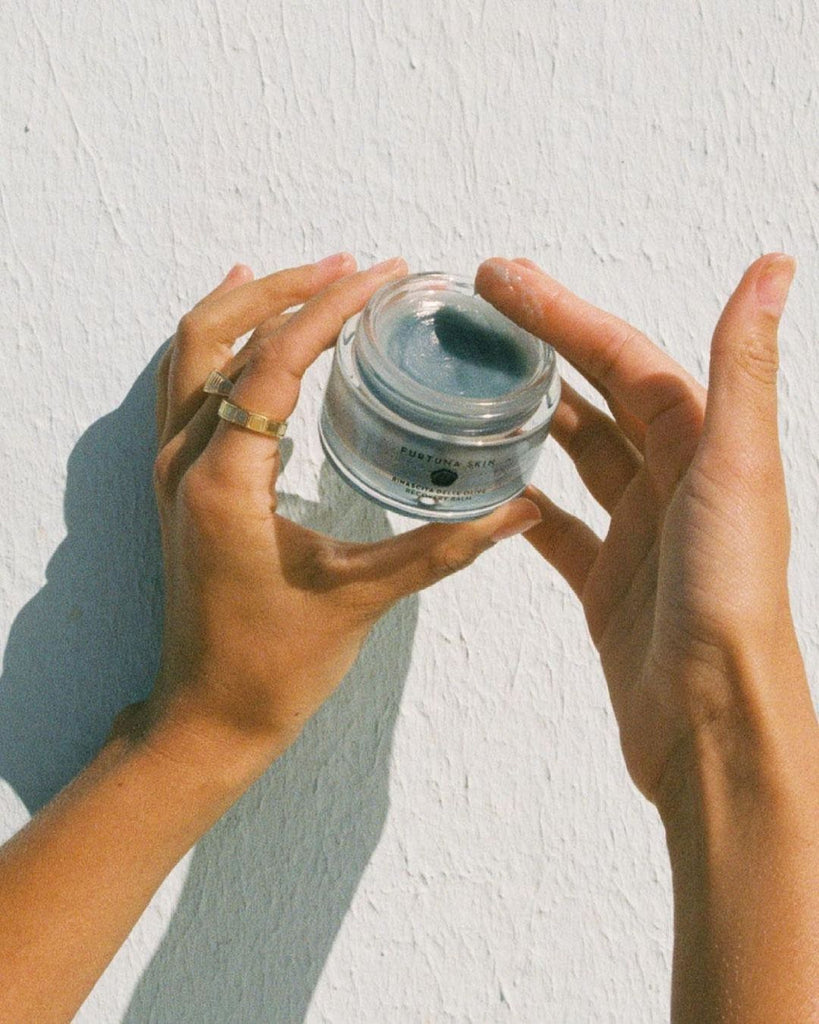As the seasons shift, a majority of women will find melasma, the mask-like pigmentation disorder, has returned during the last few months of summer. Melasma is a pesky, chronic skin discoloration triggered by a variety of factors: hormone fluctuations, pregnancy, oral contraceptives, exposure to excessive sun, heat, or plain old genetics. Getting rid of melasma is almost impossible; it never really goes away. Its persistence makes COVID-related “mask-ne” look like child’s play.
However, there are various internal and external options to treat melasma and keep it under control—including a strict skincare routine that cuts out unnecessary exposure to heat and sun. (Discipline in relation to sun protection is always a key factor, as anyone with this condition will tell you. Even after months of successfully keeping hyperpigmentation at bay, it takes only an hour without a hat under the sun to have it all reappear again.)
We consulted a handful of the most respected dermatologists, skin experts, and even a model who battles melasma (it is, after all, her vocation to have clear skin) about their diverse approaches when it comes to managing melasma to help guide you in determining what methods are ideal and effective for you and your lifestyle.
Dr. Julia T. Hunter, MD
“Wholistic” Dermatologist
The renowned Los Angeles-based dermatologist offers a results-proven approach to tackling melasma. Dr. Hunter deems it imperative to not only treat the symptoms, but also to find and prevent the underlying causes that bring on discoloration, then work to prohibit hyperpigmentation from returning in the future.
Her innovative “wholistic” approach addresses this skin concern from both internal and external perspectives. The internal approach is bespoke and varies with each patient, but often consists of therapeutic doses of Vitamin D3/K2 (not just for optimal health, but to help with deficiencies that can often promote melasma) and an ingestible Organic Sulfur mineral drink to help improve skin, thyroid, and pigmentation from the inside out. Externally, Hunter prescribes from her chirally-correct (containing only molecules with the ability to provide results) physician-strength Skin Therapy line, an array of non-inflammatory topical solutions to help diminish and rid discoloration of the skin.
Dr. Harold Lancer
Lancer Dermatology
To treat melasma issues, Lancer’s clients are put on a topical regimen before having any in-office treatments performed. Patients are instructed to use his specific protocol for 2-6 weeks, depending on their skin specifics and genetic history. Topical treatments include The Method (a Lancer-specific exfoliator, cleanser, and moisturizer) along with other products he specifically prescribes depending on skin type—including retinol, glycolic acid, vitamin C and hydroquinone. The Method, in conjunction with the other products listed above, works to reduce excess melanin production and enhance the shedding of inflammatory excess-coloring cells. “Fraxel, which is a light energy-based device, is seen as an old-style approach in our office that is not always recommended,” Lancer said. “When used improperly, it can cause more residual inflammation. Down the road, it can lead to the recurrence of melasma. The Lancer Method helps skin act younger by accelerating cell turnover, supporting natural collagen regeneration, and feeding skin essential nutrients.”
Georgia Louise
Celebrity Facialist, Georgia Louise Atelier
Georgia Louise’s approach to treating melasma is through non-invasive in-atelier facial treatments and home care to prevent hyper-inflammatory reactions—which can often occur with lasers. Beginning with customer prep, “I always have my clients get blood work done with their doctors to ensure they’re on any necessary hormonal treatments, and I recommend that they use the Environ Prep system, a line of melanocyte-reducing topical treatments, one month before undergoing my in-atelier treatment procedures so that we can train the melanocytes to reduce the production of melanin,” Louise said. “Once we start with in-atelier treatments, I typically use a course of light TCA peels ranging between 5-10% with LED light therapy, sonophoresis, galvanic technology (which helps to break down melasma while actives brighten pigmentation), and/or micro-needling (in my NYC atelier) with synthetic stem cells, which also greatly breaks down melasma.” Louise feels it’s important her clients use a series of products at home for maintenance in between office treatments. This typically includes using the Georgia Louise GLOlite LED Mask three times per week with the green and red light, the Georgia Louise Hollywood EGF Kit for safe at-home microneedling one time per week, the Georgia Louise Enzyme Cleanser, and the Georgia Louise Vitamin A Serum, which contains retinol and vitamin C.
Candace Marino
The LA Facialist
“My favorite treatment option for melasma is a peel called Cosmelan MD,” Marino, an aesthetician better known as “The LA Facialist” said. “Instead of working on just the surface appearance of the skin like traditional chemical peels, this peel works at a cellular level to actually stop the overactive melanocytes responsible for the melasma. Cosmelan is a pigment-inhibiting peel that works by slowing melanin production while accelerating cell turnover to lift dark patches from the skin. I generally recommend this peel for melasma sufferers one or two times a year.”
“This is a compound applied to the skin and left on as a mask for eight hours. Clients can expect redness, flaking, and sensitivity for two weeks, and clients can see improvement in their pigment in just seven days. Lasting results are dependent on the client's skincare routine and lifestyle post-treatment. Because there is no cure for melasma, clients should be on a long-term pigment-inhibiting routine between Cosmelan treatments, and products should include tyrosinase-inhibiting ingredients such as vitamin C, kojic acid, azelaic acid, tranexamic acid, hydroquinone and arbutin. Besides the religious use of SPF every single day, clients need to maintain a lifestyle that keeps them out of direct sun exposure and heat. Saunas, jacuzzis, and hot yoga should be avoided at all costs, since heat is a major contributing factor for melasma.”
Joanna Vargas
Joanna Vargas Skincare
“Melasma has many different causes, so it’s not a skin condition that I would say is one size fits all,” Vargas, a celebrity facialist who’s worked with Elisabeth Moss, Helena Christensen, and Maggie Gyllenhaal, said. “Generally speaking, if we are talking melasma from sun damage, I would advise the Twilight Facial, which is microneedling with radio frequency. It also includes one of my Twilight Face Masks with Cryotherapy and then ends with 20 minutes in my patented RevitaLight LED Bed. I would follow that with the resurfacing Clear + Brilliant Skin Rejuvenation Facial a few days later. These minimally invasive treatments create controlled damage that remodels the collagen, stimulates collagen production, and evens the skin tone.”
Molly Sims
Model, Actress, and Beauty Authority
Sims relies on a consistent regimen with a strict avoidance of sun exposure to keep her hyperpigmentation under control. “To control melasma, I have a very simple but personally effective philosophy: less is always more,” she said. “Additionally, I try to be as consistent as possible with my morning and evening skin routine. I use products that are clean and proven to work on my skin to treat the hyperpigmentation. In the evenings, I wash with Cetaphil, then I take two soaked pads of Biologique Recherche Lotion P50 1970 toner to the face. I also like to use Sarah Chapman’s Skinesis Overnight Facial and sometimes IS Clinical Brightening Serum. Twice a week, I use Shani Darden’s Retinol Reform Treatment. I find that to work effectively as well. I don’t over-microneedle my skin or do any harsh treatments that overstimulate it, or might cause inflammation. For facials, I go to Georgia Louise and let her do her miracle work. I have her do regular radio frequency treatments when she sees me. When I can’t get to Georgia, I use my Nu-Face consistently at night to even out my skin tone and provide firmness to my skin. Lastly, my hat and sunscreen are with me every time I go out.”



